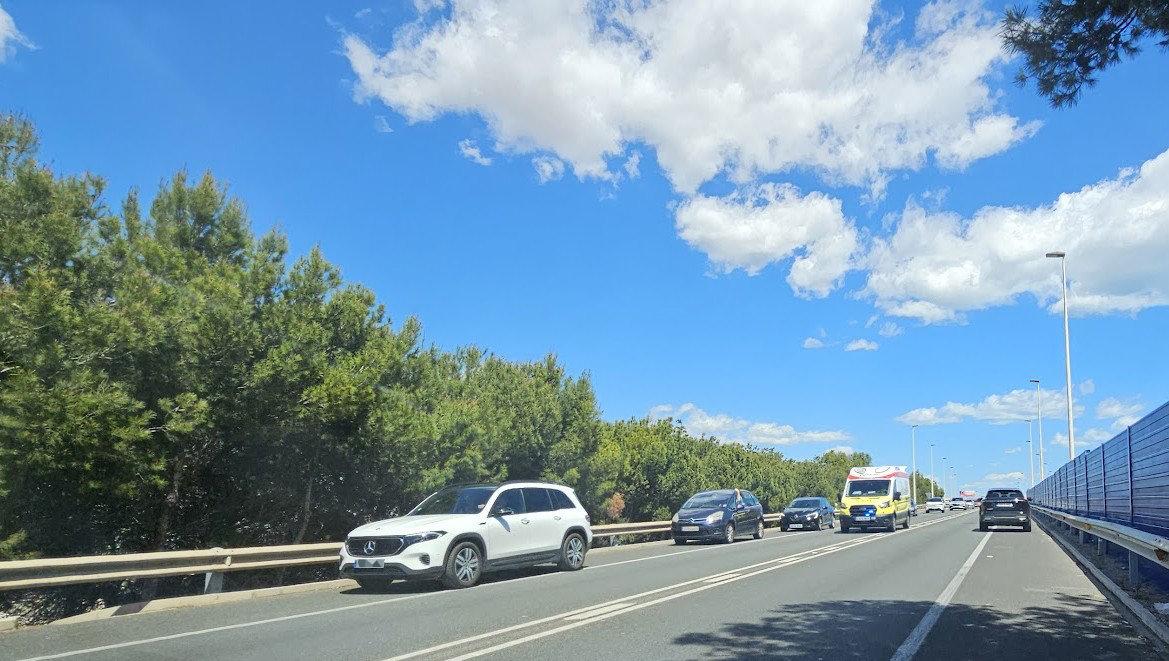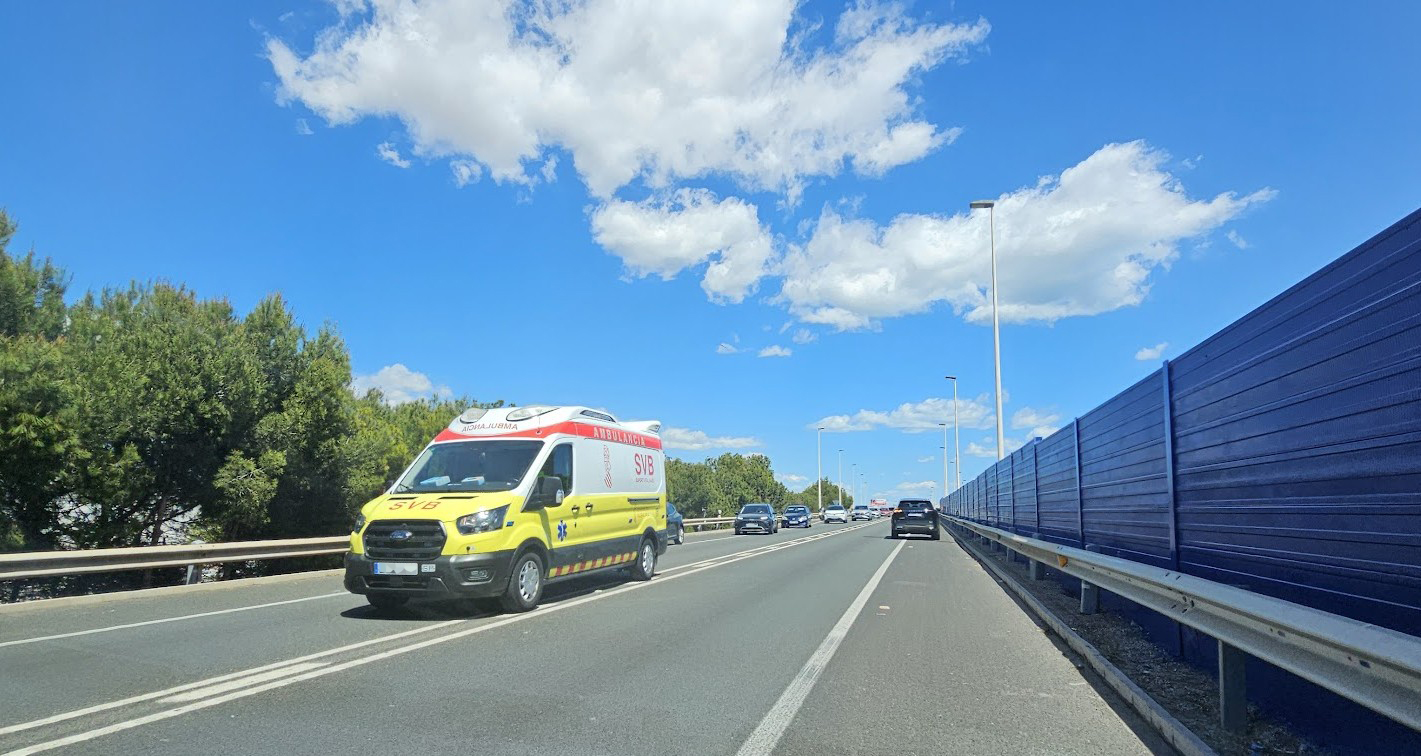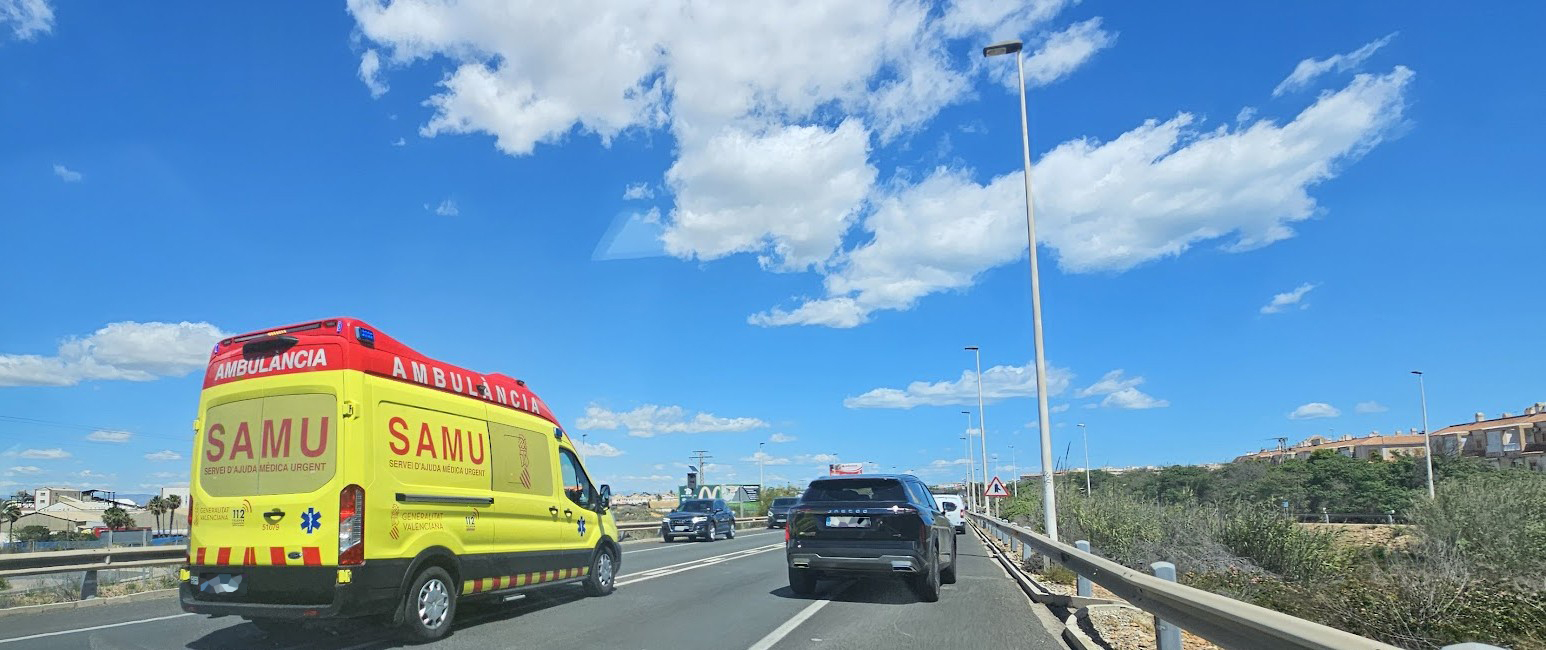When an emergency vehicle is responding to an incident, the best thing any of us can do is to move out of the way in a safe manner, and in Spain, like many other countries, drivers are taught to create an “emergency corridor” which allows a space for the emergency vehicle to pass through safely.
Before we explain what that means, it is also worth noting that the security services, Guardia Civil, police, often display blue lights constantly. This is part of effective visible policing, and when these lights are static, they are just going about their business normally. It is only when the blue lights are flashing that they are responding to an emergency, which will also often be accompanied by a siren.
This is also why it is crucial that you are constantly aware of your surroundings, looking and listening all the time, and why, for example, listening to loud music, or not carrying out effective observations can be so dangerous, and can be dealt with by fines, as somebody´s life could depend on you.



How to create the emergency corridor
In basic terms, vehicles move over, when safe, to create a gap for the emergency vehicles to pass through.
On a single-lane, normal road, vehicles move over to their right, where possible, on both sides, subsequently the emergency vehicle will drive through the gap left in the centre of the road.
If the road consists of two lanes in one direction, drivers should move over to both sides, with those in the right lane going to the right and those in the left to their left, in such a way that they leave a central corridor of free access to allow the passage of emergency vehicles through the centre of the two lanes.
If there are three lanes in one direction, the two lanes to the right move right, and the vehicles in the leftmost lane moves to the left, and so the emergency vehicle will pass through the gap created between lanes 2 and 3.
Changes in 2025
One issue with the development of the emergency corridor is that to date it has only been a recommendation, followed by most drivers, but not all. Those who don’t know how to react can often impede the flow of traffic. In 2025, the intention is to make this strategy mandatory, and so all drivers must know how to react, and then do so when appropriate.
“The objective of this modification is precisely to explain in a clear way how drivers should behave in these circumstances to facilitate the work of the emergency services and expedite their access to the victims of an incident,” explains Ana Blanco, the deputy director of DGT circulation.
Until now, the regulations established that priority must always be given to priority vehicles in emergency services, but without specifying the behaviour of the rest of the drivers, in other words, the law gives emergency vehicles priority now, but doesn’t explain how that priority is put into practice. This new modification will specify exactly how they have to act from now on by law.
Discover more from N332.es - Driving In Spain
Subscribe to get the latest posts sent to your email.

You must be logged in to post a comment.